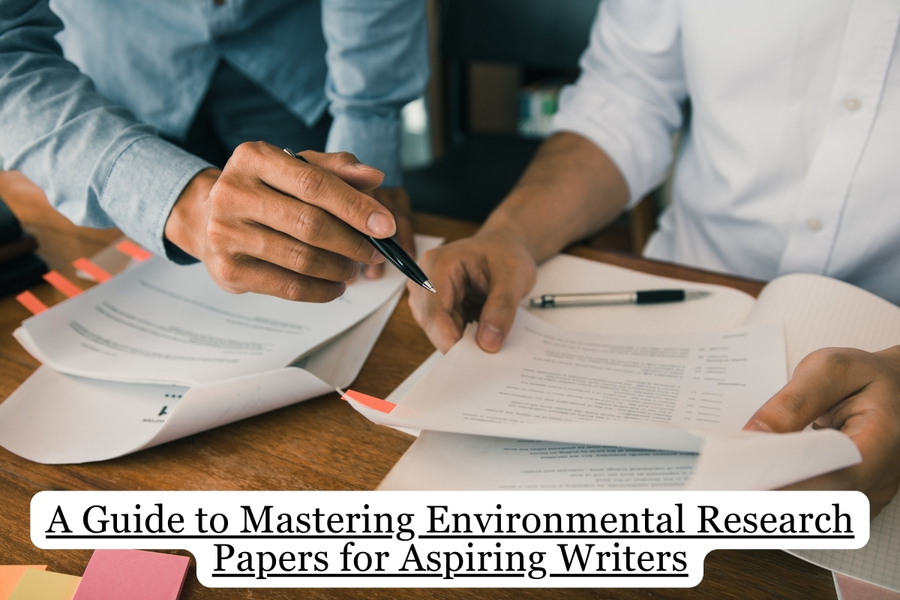

Imagine this: over 90% of people on Earth breathe polluted air every day. That’s an astounding statistic, don’t you think? Environmental research isn’t just about numbers—it’s about understanding the world we live in and finding ways to fix it.
Whether it’s climate change, disappearing forests, or plastic-choked oceans, your words as a student writer can make a difference. This guide is your roadmap to writing killer environmental research papers. If you’re a student eager to dive into this field, you’re in the right place—let’s get started!
Environmental research is special because it mixes science with real-life problems. You might study biology one day and government policies the next—it’s a mash-up of ideas all aimed at saving the planet.
Every research paper has key parts: an introduction to hook readers, a literature review to show what’s already out there, a methodology explaining your approach, results to share your findings, a discussion to dig into what it all means, and a conclusion to wrap it up.
You could write a case study about a polluted river near your town, run an experiment on plant growth, or analyze laws about recycling. Each type teaches you something new about our world.
Good research means finding trustworthy stuff to back you up. Stick to peer-reviewed journals (think Nature or Science), government stats, or reports from groups like the World Wildlife Fund. Avoid using dubious websites or outdated data—your paper must have a strong foundation.
Use databases like Google Scholar, PubMed, and JSTOR to find articles quickly. Environmental datasets from NASA or NOAA can provide you with raw data, ideal for creating graphs or experiencing significant insights.
Here’s a pro tip: when you’re crunched for time and need to pull research together fast, same day essay services can help you organize your thoughts and sources into a draft—super handy for those all-nighter moments.
These writing services offer professional guidance, ensuring your paper is clear, concise, and properly structured. It’s an efficient way to enhance your writing quality, even under tight deadlines, helping you submit work you can confidently stand behind.
Jot down key points and where you found them. Group your notes by theme—say, “causes of deforestation” or “effects on wildlife”—so your paper flows when you write it. Trust me, future-you will thank present-you for staying organized.
Structure is key to a coherent paper. The Southwest Minnesota State University guide provides detailed best practices, summarized in the following table:
| Section | Best Practices |
| Introduction | Describe what was planned and why, include problem statement, hypothesis, importance, background references, and define terms. |
| Literature Review | Summarize existing research, identify gaps, and cite references correctly (author and year). |
| Methodology | Concise description in past tense, detail equipment and procedures for repeatability, no materials list. |
| Results | Present data with tables and graphs, no explanations (provided in discussion), focus on clarity. |
| Discussion | Explain results, why they occurred (based on literature), reveal nature’s workings, include conclusions/recommendations, note error sources. |
| Conclusion | Recap key points, suggest next steps, and provide a call to action for further research or action. |
The Environmental Research guide adds journal-specific advice, such as word limits (7,500 words for research papers, 10,000 for reviews) and requirements for abstracts (max 250 words, factual, no references unless essential). It also encourages graphical abstracts for visual summaries, enhancing accessibility for readers.
Keep it simple—don’t drown readers in science-y words. Define “biodiversity” if you use it. Add a story—say, a kid finding trash on her beach—to make it real. Stay fact-based but let your passion peek through; this is about the planet, after all!
Picking a topic can feel overwhelming with so many environmental issues out there. Start by finding what lays you off up—maybe it’s solar power, shrinking ice caps, or city pollution.
Then, zoom in. Instead of “climate change,” try “how melting glaciers affect polar bears.” Make sure your topic fits your assignment—your professor might want something super academic, while a blog could be more chill. A great topic is one you’re curious about and hasn’t been beaten to death by everyone else.
Read it through—does it make sense from start to finish? Fix choppy bits so it feels smooth.
Use APA, MLA, or Chicago—whatever your prof wants. Get those citations right; sloppy ones tank your cred.
Hunt typos and awkward sentences. Read it aloud—it serves as a handy guide for identifying grammatical errors.
Submit to a school journal or an enviro blog—know their vibe first. If it’s peer-reviewed, brace for feedback and tweak accordingly. Share it on social media or at a student conference—get it out there!
Stuck? Scribble random thoughts to unblock your brain. Are you overwhelmed by the abundance of data? Pick the best stats and ditch the rest. Remind yourself why you care—writing about coral reefs could help save them.
You’ve got the tools now: pick a topic, research smart, structure it right, and polish it up. Writing environmental research papers isn’t just homework—it’s your chance to tackle big problems.
Your words can push for cleaner air or greener cities. So, grab your laptop and start today—our planet’s counting on you!
